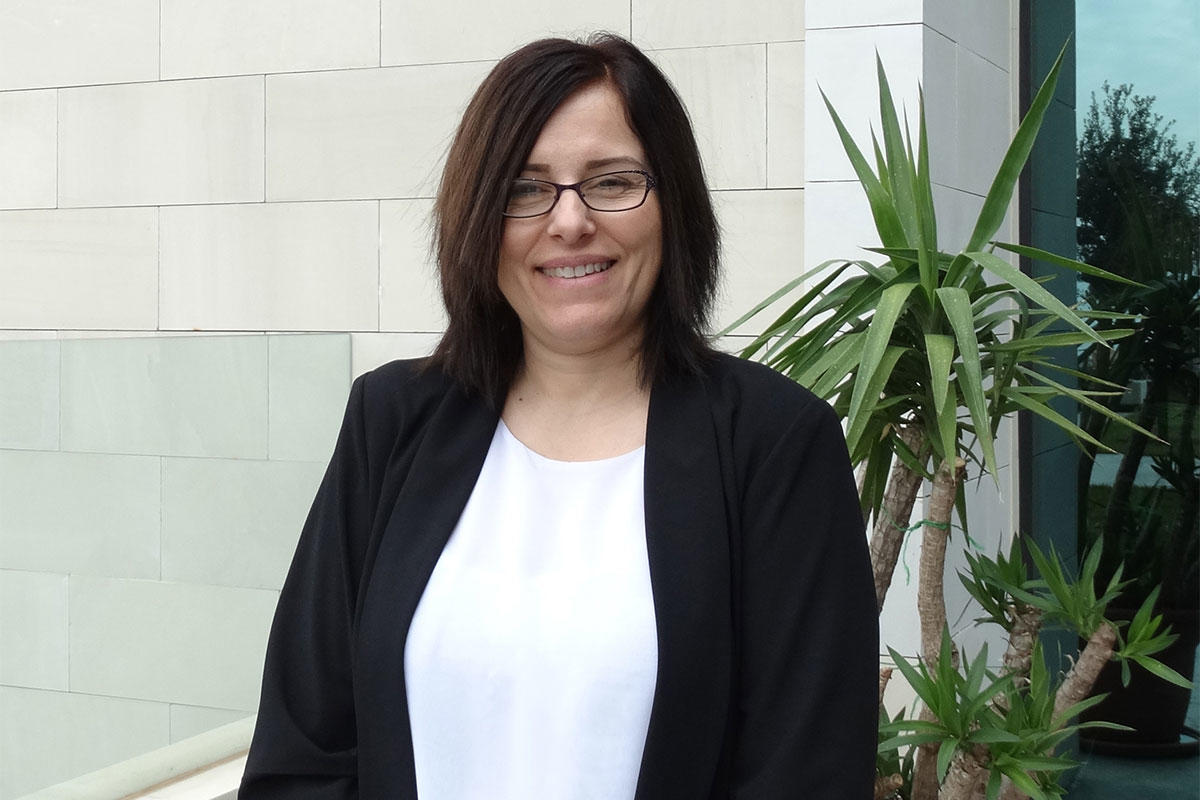Dr. Lina Karam Joins LAU as Dean of the School of Engineering
The dean is planning to apply her experience in distance learning to enhance online course delivery.
Dr. Lina Karam joined LAU in 2020 as dean of the School of Engineering (SOE) from Arizona State University (ASU) where she served as full professor in the School of Electrical, Computer & Energy Engineering, and director of the R&D Image, Video, and Usability (IVU) Lab. She was also chair of the Computer Engineering Graduate Program and Computer Engineering Director for Industry Engagement at ASU.
A fellow of the Institute of Electrical and Electronics Engineers (IEEE), Dr. Karam holds seven US patents and is the author of over 220 technical publications. Dr. Karam is also the Editor-in-Chief of the premier IEEE Journal on Selected Topics in Signal Processing. She is a recipient of the National Science Foundation CAREER Award, NASA Technical Innovation Award, the Intel Outstanding Researcher Award, the IEEE Signal Processing Society’s Best Journal Paper Award, IEEE Phoenix Section Outstanding Faculty Award, and IEEE Region 6 Award.
Here she talks about her vision for the SOE, and how she will bring her experience to bear during her deanship.
What are your aspirations for the school?
Engineering has had great impact on human lives and the world we live in. More and more people depend on devices, tools, and structures conceived, designed, and developed by engineers, from buildings, transportation, energy and telecommunication systems, consumer electronics, medical devices, to assistive technologies, among many others.
Because of this ever-increasing impact of engineering on human experiences and the world we live in, the SOE carries a fundamental responsibility to educate students to become the engineering leaders, innovators, critical thinkers, and lifelong learners who can positively impact human lives and society. To this end, we seek to provide excellence in education in an environment that not only equips our students with fundamental engineering skills but also promotes innovation, diversity, ethics, use-inspired R&D, technology transfer and leadership in service to the community.
Interdisciplinary education, collaboration between academia and industry, and innovation have been equally important in your career. Which would you work to advance the most in the school, and how?
Innovation is the key to impacting society and the economy by enabling new improved products and services. Leading industries are advocators of innovation and have customers with real-world challenges waiting to be solved, which may present collaborative R&D and technology transfer opportunities. Our SOE is a powerhouse with an impressive highly skilled faculty contributing discoveries and advancing knowledge across various areas, as well as highly talented students. It can therefore provide much-needed expertise and a skilled workforce to help industries conceive and implement innovative solutions and transformative technologies. Many of today’s real-world challenges are complex in nature and require transdisciplinary collaborations across disciplines and sectors (university-industry-government-NGOs) to devise effective solutions. So, all these aspects are interconnected.
You’ve come up against unexpected challenges as dean, such as the swift migration to remote learning dictated by the COVID-19 outbreak. How did your experience at ASU help you make that transition at the school?
As a full professor at ASU I offered online sections of my undergraduate and graduate courses to remote students for 20+ years. I still hold an Emerita Professor affiliation at ASU and supervise doctoral students, where the ASU Electrical Engineering Online Graduate Program is ranked no.1 in the US by US News & World Report.
The technologies we use at LAU and the SOE for our online course delivery are on par with technologies I used at ASU. The main difference is that ASU, through its Global Outreach and Extended Education (GOEE), provides an extensive network of staff to support both faculty and students with recording, technical issues, and communications in support of the online course delivery. So, while the technology is the same, more resources are needed for LAU to scale the online course delivery and improve the online learning experience by providing additional training and support to faculty and students. Also, a main difference is that the majority of students enrolled in the online program at ASU (about 89 percent) are employed and can get some support from their employers in terms of facilities or tuition reimbursement.
What about online assessments and exams?
With the current COVID-19 outbreak, human proctors are no longer an option, and instructors in the US, just like Lebanon, have to figure out how to best assess the online students’ learning or administer online exams without the human proctoring option. We are currently working closely with LAU’s Center for Innovative Learning and the Department of Institutional Research and Assessment to evaluate the online student learning experiences in order to determine how we can improve the learning experience at the SOE and LAU.
You have done seminal work in signal processing and driverless technology. Will you carry on with that research?
Within signal processing, my recent research work focused on image and video processing, compression and transmission; computer vision; machine learning/deep learning; perceptual-based processing; and multidimensional signal/data processing.
Driverless technology, which is a subarea of automated mobility, is an interdisciplinary field encompassing several engineering disciplines including but not limited to sensing, signal processing, computer vision, machine learning, robotics, communications and networking, electrical engineering, mechanical engineering, computer and software engineering, safety and fault tolerance, human factors engineering, civil engineering for the design of driverless-friendly infrastructures, and industrial engineering for transportation-related performance assessment and optimization.
My plan is to continue research and development in these and other important emerging areas, and more importantly to mentor and help in training students for them to develop much-needed skills in such areas.
This article has been edited and condensed.
